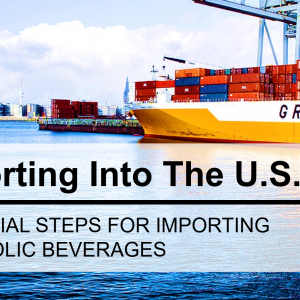In the previous years the PET bottles have accounted for 50% of global soft drinks packaging. This is the most often used packaging solution for the private label soft drinks, however recently it has started carving its niche in a private label alcohol drinks packing. Although this packaging solution still remains in the third place after glass bottles and metal cans it is expected to grow in the coming years. The PET bottles have been started to use in bottling wine, bear, white spirits and even whisky!
The newest trend is the wine packaged in the 750ml PET bottles. This solution was implemented in Swedish market when the Swedish state alcohol monopoly Systembolaget. This was introduced in 2008, however, it took off in 2010 when all wines were available in previously mentioned PET bottles. The advantages of this packaging solution are that they are lightweight, convenient and they incorporate excellent closure features. The other edge of a PET wine bottle is that it can be easily resealed. Also although many perceive PET wine bottle to be less prestigious that glass bottles it is hard to distinguish the difference between the two since the design is identical. Furthermore, PET bottles have better transparent properties which help to reveal the quality of wine.
The other noticeable trend is the increase of PET bottles in “live” (non-pasteurised) bear bottling. This is mainly because of the new distribution channels for the bear that have been growing recently – street kiosks. There is noticeable increase in this kind of selling points in the Eastern European Countries. The consumers are allowed to choose from 0.5, 1 or 2 litter bottles which are filled with the bear of their choice. This is the unique selling point for non-pasteurised bear which is rarely sold in traditional retail supermarkets.
In the USA the white spirits are mostly sold in PET bottles, they account for more than 50% of all packaging used for such products. Since the PET bottles have successfully penetrated the economic segment market, currently there are tries to implement them in premium alcohol drinks. For example MS Walker in USA has launched premium vodka in 1750ml PET bottle using heavier design so that it replicated the glass bottle.
The economy segment private label whisky was launched in South Korea which was bottled in PET. This allowed the company to introduce the smaller size bottles of 200ml which was aimed at those for whom the whisky in common sized bottles (500ml or 700ml) was too expensive.
From the current trends we can expect the growth of PET bottles usage in private label alcoholic beverages since they offer various advantages versus standard glass bottles or metal cans. We can expect the penetration of PET bottles in other segments of alcohol drinks which will help the brand owners to other higher quality products at a lower price.
